Yoga: lets understand logic behind it
it is an ancient practice that brings harmony to the body, mind, and soul. it combines physical postures (asanas), breathing techniques (pranayama), and meditation to promote overall well-being. it is for everyone, regardless of age, fitness level, or experience. Whether you’re looking to improve your flexibility, reduce stress, or simply find a moment of calm in your busy day, it offers countless benefits. With just a mat and an open mind, you can embark on a journey of health, happiness, and inner peace. it is truly a gift for life.
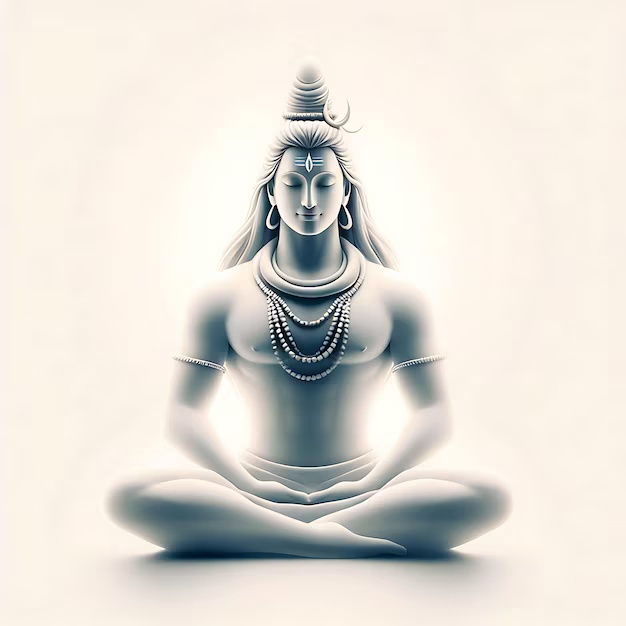
Table of Contents
What is Yoga?
it is much more than just physical exercise; it is a holistic practice that nurtures the mind, body, and spirit. The word “yoga” comes from the Sanskrit word “yuj,” meaning “to unite” or “to join.” This reflects the ultimate goal of it: to create harmony between your physical body, mental state, and inner self.
its combines three key elements:
Asanas (Postures): These are physical movements and poses that stretch, strengthen, and balance the body. From beginner-friendly poses like Mountain Pose to advanced ones like Headstand, asanas cater to all levels of ability.
Pranayama (Breath Control): it emphasizes mindful breathing, which calms the mind, improves lung function, and increases focus. Simple practices like Deep Breathing or Alternate Nostril Breathing can work wonders for your mental clarity.
Meditation and Relaxation: it encourages mindfulness and stillness. Practices like meditation help reduce stress, boost emotional health, and enhance self-awareness.
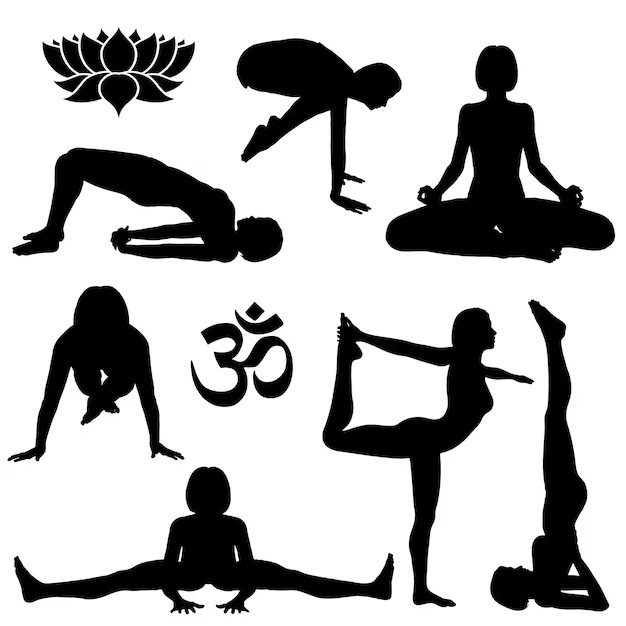
The beauty of yoga lies in its accessibility and adaptability. Whether you are 8 or 80, fit or starting anew, it meets you where you are. You don’t need expensive gear or years of experience—just a willingness to learn and grow. With regular practice, yoga improves flexibility, builds strength, reduces stress, and brings balance to your daily life. It’s not just a workout; it’s a way of life that inspires inner peace and overall well-being.
The best part?, You don’t need fancy equipment, a specific age, or even flexibility to get started! All you need is a little space, a mat, and a willingness to try.
History of Yoga
The Sanskrit term yoga comes from the root yuj (युज्), meaning “to attach, join, harness, or yoke.” Initially, it referred to the practice of restraining or “yoking in” the senses. Over time, the concept evolved into a metaphor for “linking” or connecting with the divine.
Various scholars offer different interpretations of the word. It has been described as “bond,” “restraint,” or even “spiritual discipline.” Some view it as a way to control or restrain the mind, much like yoking it into focus.
Pashupati statue found from Indus Valley Civilisation, seated figure in Mulabandhasana, surrounded by animals,3300 BCE, India
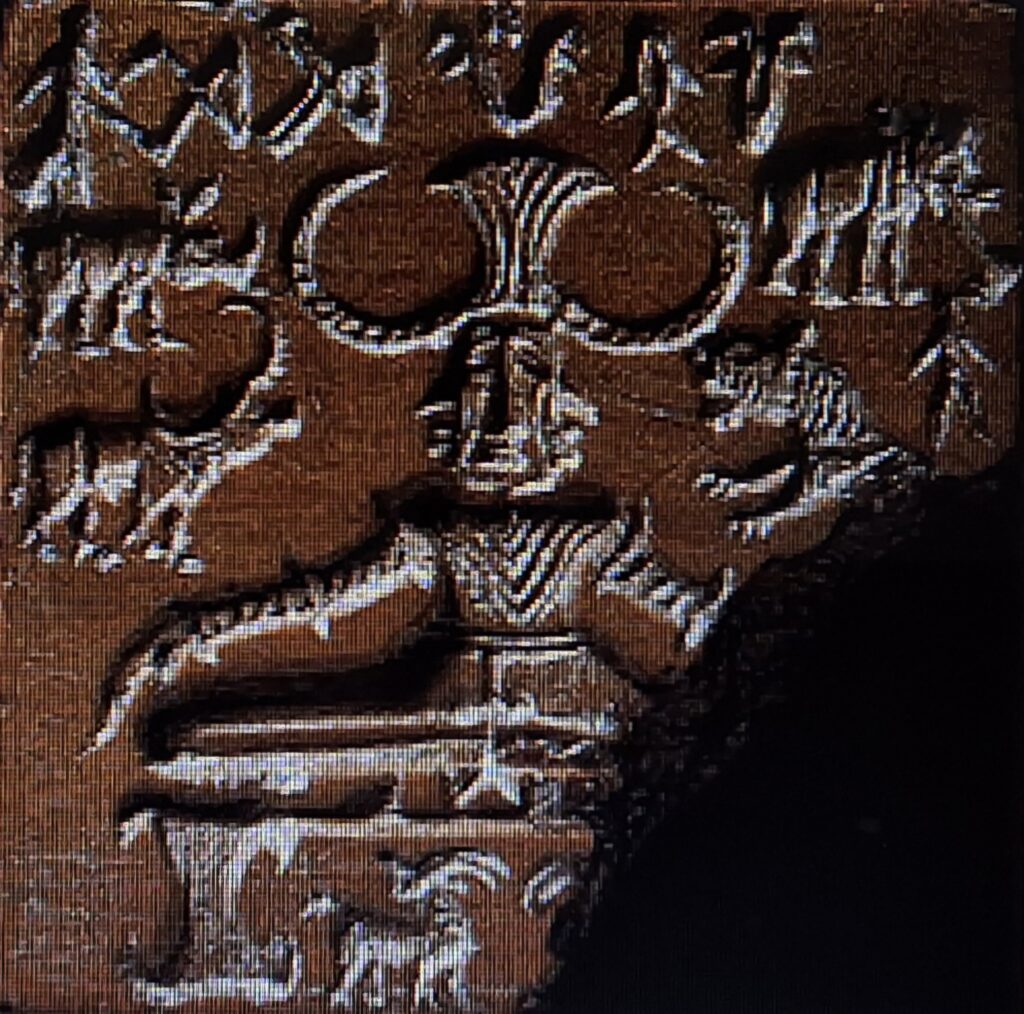
The term shares its origins with the English word “yoke,” as both trace back to the same Indo-European root. Its earliest known appearance is found in the Rigveda (hymn 5.81.1), where it is understood as “yoke” or “control” in reference to the rising Sun-god.
The ancient grammarian Pāṇini suggested that it could come from two roots: yujir yoga (to yoke) or yuj samādhau (to concentrate). In the context of the Yoga Sutras, traditional commentators favor the latter interpretation, where it signifies concentration. Vyasa, who wrote the first commentary on the Yoga Sutras, equated it with samadhi (a focused or absorbed state). According to interpretations, samadhi covers all levels of mental experience, from the ordinary to the extraordinary. those who practices it or deeply follows its philosophy is known as a yogi, while a female practitioner may be called a yogini.
Classical texts that supports it
Maitrayaniya Upanishad: This Upanishad discusses the integration of it with spirituality. It emphasizes sixfold yoga, including breath control (pranayama), sensory withdrawal (pratyahara), meditation (dhyana), and absorption (samadhi). It connects yoga to liberation (moksha) by controlling the mind and harmonizing the body with higher consciousness.
Vaisesika Sutra: A foundational text of the Vaisesika school of Indian philosophy, it emphasizes categories of reality (padarthas). Though not primarily a its text, it connects it to mental discipline, explaining how focused thought and self-control lead to clarity, enabling liberation from suffering.
Katha Upanishad: This Upanishad presents it as a means to control the senses and mind. It uses the metaphor of the chariot, where the body is the vehicle, the mind the reins, and the intellect the charioteer. Through it, one can achieve self-realization and unite with the ultimate Self (Atman).
Bhagavad Gita: A central text for it, the Gita presents three key paths: karma yoga (selfless action), bhakti yoga (devotion), and jnana yoga (knowledge). It teaches how disciplined living, mental focus, and surrender to the divine lead to liberation.
Yoga Sutras of Patanjali:
A foundational text, it outlines the eightfold path (ashtanga yoga), including ethics (yamas), discipline (niyamas), postures (asanas), breath control (pranayama), and deep absorption (samadhi). It systematizes yoga as a method for achieving mental clarity and spiritual liberation.
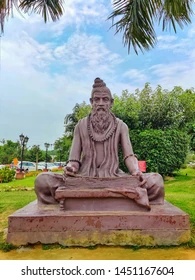
Yogācārabhūmi-Śāstra: A Mahayana Buddhist text, it explores the Yogacara school’s teachings. It emphasizes meditative practices, stages of mindfulness, and the transformation of consciousness to overcome suffering and achieve enlightenment.
Kaundinya’s Pancarthabhasya: This commentary on the Pashupata-sutra explains it within the Shaivite tradition. It focuses on ascetic practices, devotional worship of Lord Shiva, and meditation to purify the soul and attain liberation.
Yogaśataka: A Jain work by Haribhadra Suri, it integrates it with Jain philosophy. It emphasizes ethical living, meditation, and spiritual discipline as a path to liberation, aligning with Jain principles of non-violence and self-restraint.
The Linga Purana: It is an important text in Hinduism that discusses the nature of Lord Shiva, his worship, and philosophical concepts related to the universe. It includes teachings on cosmology, rituals, and devotion, offering insights into the spiritual practices that are foundational to it, particularly in the context of devotion and unity with the divine.
The Brahmasutra-bhasya by Adi Shankara: A commentary on the Brahmasutras, which outlines the principles of Advaita Vedanta, a non-dual philosophy. Shankara’s interpretations emphasize the oneness of the individual soul (Atman) with the supreme reality (Brahman), a concept central to yogic meditation and realization of the self.
The Mālinīvijayottara Tantra: A key text in non-dual Kashmir Shaivism, presenting teachings on the nature of consciousness and the process of spiritual awakening. This text offers a framework for realizing the self as one with Shiva, with practices that include meditation and yogic techniques for uniting the individual consciousness with the divine.
Mrgendratantravrtti: A commentary by Narayanakantha, a scholar of Shaiva Siddhanta. It elaborates on the metaphysical aspects of it, focusing on the power of divine consciousness and the transformative potential of yogic practices to achieve liberation.
The Śaradatilaka by Lakshmanadesikendra: Shakta Tantra text that addresses the worship of the goddess Śakti, highlighting the spiritual practices used to awaken divine energy and achieve self-realization through tantric rituals, including it.
Yogabija: Hatha yoga text that deals with the practical aspects of it, focusing on physical postures (asanas), breath control (pranayama), and meditation techniques aimed at purifying the body and mind to attain spiritual liberation.
Each of these texts offers unique perspectives and practices that contribute to the comprehensive understanding of yoga across various traditions within Hinduism and Tantra.
Scholars’ Definitions
1. Indian Scholars’ Definitions
Swami Vivekananda
- Definition: it is the “science of the mind.” It is a systematic method to control the mind and realize the ultimate unity of the self with the divine.
- Explanation: Vivekananda emphasized practical aspects of it, particularly Raja Yoga, as a means to achieve self-realization and liberation (moksha). He presented as universal and scientific, appealing to both Eastern and Western audiences.
B.K.S. Iyengar
- Definition: it is the “Chain from the body to the mind and then mind to the soul.”
- Explanation: Iyengar focused on Hatha Yoga, emphasizing precision and alignment in physical postures (asanas) as a path to spiritual growth and self-awareness. His method integrates physical health with mental clarity and spiritual depth.
T. Krishnamacharya
- Definition: it is the process of calming the mind and directing it toward spiritual goals.
- Explanation: Known as the “father of modern yoga,” Krishnamacharya emphasized adapting it practices to suit individual needs. He highlighted the integration of breath (pranayama), movement, and meditation.
Patanjali (ancient, interpreted by modern scholars)
- Definition: it is “Chitta Vritti Nirodha,” meaning the cessation of fluctuations in the mind (it Sutras of Patanjali).
- Modern Interpretation: Scholars see this as a foundational psychological approach, where it is a means to discipline the mind, achieve inner peace, and transcend worldly distractions.
2. Global Scholars’ Definitions
Mark Singleton (UK)
- Definition: it, in its modern form, is a “hybrid practice combining traditional Indian techniques with Western physical culture.”
- Explanation: Singleton explores how modern postural yoga evolved through cross-cultural influences, particularly during the 19th and 20th centuries. He argues that yoga today is as much a physical and wellness practice as it is a spiritual one.
Georg Feuerstein (Germany)
- Definition: it is “spiritually rooted in ancient Indian traditionlly, aims for self-motivation, self-discipline and enlightenment.”
- Explanation: Feuerstein delves deeply into the historical and philosophical roots of it, stressing its spiritual and meditative dimensions over its physical aspects.
Jon Kabat-Zinn (USA)
- Definition: it is a “mindfulness-based practice that connects movement with awareness to promote mental and physical health.”
- Explanation: While not a traditional yogi, Kabat-Zinn incorporates it into his Mindfulness-Based Stress Reduction (MBSR) program, focusing on its therapeutic benefits, such as stress reduction and mental clarity.
David Gordon White (USA)
- Definition: it is a “multifaceted tradition that spans physical, spiritual, and esoteric practices across different cultures and eras.”
- Explanation: White examines yoga from a historical and academic perspective, showcasing its diverse interpretations and adaptations over millennia.
3. Common Themes in Modern Interpretations
- Unity: it is described as a practice to unify body,motivation, self discipline, mind-controls, and spirit.
- Practicality: Modern scholars highlight its adaptability for health, therapy, and personal growth.
- Secular and Spiritual Duality: it is viewed both as a spiritual pursuit and a secular wellness activity.
- Integration: Contemporary views integrate traditional Indian philosophy with global scientific and therapeutic insights.
Comparison of Indian and Global Perspectives
| Aspect | Indian Scholars | Global Scholars |
|---|---|---|
| Focus | Spiritual liberation and unity | Wellness, mindfulness, and cultural evolution |
| Approach | Rooted in tradition and philosophy | Blends tradition with scientific inquiry |
| Practices | Asanas, pranayama, meditation, devotion | Emphasis on asanas and mindfulness |
| Purpose | Moksha (liberation) and self-realization | Stress relief, health, and self-awareness |
Chronology of it from its origin
Origin (Pre-Vedic and Vedic Periods)
it’s origins trace back over 5,000 years to the Indus Valley Civilization, as seen in seals depicting figures in meditative postures. It developed as a spiritual practice, intertwining with early Indian traditions. During the Vedic period (1500–500 BCE), it found its first textual references in the Rigveda, where ascetics sought transcendence through meditation and sacrifices. The Upanishads (800–400 BCE) refined it as a tool for self-realization, emphasizing meditation, breath control, and the quest for liberation (moksha). Central concepts like prana (life force) and dhyana (meditation) emerged, laying the philosophical foundation of yoga.
Classical Period (500 BCE–500 CE)
This era formalized yoga philosophy, primarily through Patanjali’s Yoga Sutras (circa 200 BCE–200 CE). Patanjali codified the eightfold path (Ashtanga Yoga), emphasizing ethical conduct (yamas and niyamas), physical postures (asanas), breath control (pranayama), sensory withdrawal (pratyahara), concentration (dharana), meditation (dhyana), and ultimate absorption (samadhi). Concurrently, the Bhagavad Gita (circa 200 BCE) integrated yoga into the paths of action (Karma Yoga), devotion (Bhakti Yoga), and knowledge (Jnana Yoga). its practices were deeply intertwined with Indian philosophical systems like Samkhya and Vedanta. The classical period defined it as both a discipline for spiritual growth and a practical guide for daily living.
Post-Classical Period (500 CE–1700 CE)
This era saw the emergence of Hatha Yoga, focused on physical practices to purify the body and prepare for meditation. Texts like the Hatha Yoga Pradipika (15th century CE) systematized postures (asanas) and breathing techniques (pranayama). Tantra also influenced it, introducing subtle body concepts like chakras (energy centers) and nadis (energy channels). it expanded its purpose, emphasizing the integration of mind, body, and spirit. While the classical period stressed asceticism, post-classical yoga encouraged householders to adopt spiritual practices. Bhakti movements during this time promoted devotional yoga, making it accessible to wider audiences.
Modern Period (18th–20th Century)
Colonialism brought it into contact with Western thought. Swami Vivekananda introduced it to the West at the 1893 Chicago Parliament of Religions, presenting it as a scientific spiritual discipline. Scholars like T. Krishnamacharya and B.K.S. Iyengar emphasized physical postures, leading to the rise of modern postural of it. Western adaptations began focusing on health and fitness, often sidelining its spiritual roots. Texts like the its Sutras and the Bhagavad Gita gained international readership, fostering a global understanding of yoga as a holistic practice.
Contemporary Period (21st Century)
it is now a global phenomenon, celebrated for its physical, mental, and spiritual benefits. The United Nations has called on June 21 as International Yoga Day in 2015. Modern yoga includes diverse styles like Ashtanga, Vinyasa, and Hot Yoga, catering to fitness enthusiasts. Simultaneously, mindfulness and meditation practices, rooted in it, are widely used in therapy. Despite its global appeal, debates continue over cultural appropriation and the dilution of it’s spiritual essence. Efforts to reclaim it’s traditional roots coexist with its evolving modern interpretations, ensuring its relevance in contemporary lifestyles.
Synthesis Model
The synthesis model of it refers to the integration of diverse spiritual and philosophical traditions into a cohesive system. This approach is seen in texts like the Bhagavad Gita, which synthesizes Karma Yoga (selfless action), Bhakti Yoga (devotion), and Jnana Yoga (knowledge). Similarly, Patanjali’s Sutras blend meditation techniques from Samkhya philosophy with ethical practices and physical disciplines. This model underscores its adaptability, enabling it to bridge different philosophical schools and cultural contexts.
Linear Model
The linear model of it suggests a sequential progression of spiritual practices toward enlightenment. For instance, the Yoga Sutras outline the eightfold path (Ashtanga ), starting with ethical principles (yamas and niyamas) and culminating in samadhi (absorption or enlightenment). This approach emphasizes discipline and gradual mastery of body, breath, and mind.
Indus Valley Civilization (3300–1300 BCE)
The roots of it are traced to the Indus Valley Civilization, where artifacts like the “Pashupati Seal” depict figures in meditative postures. This suggests early forms of it as a meditative or ritualistic practice. The civilization’s emphasis on rituals, purification, and harmony reflects early yogic ideas of integrating body, mind, and spirit.
Earliest References (1000–500 BCE)
The earliest textual references to it appear in the Vedas, particularly the Rigveda, where ascetics practiced meditation to connect with the divine. The Atharvaveda mentions breath control (pranayama). These references mark its evolution from a ritualistic practice to a meditative discipline aimed at spiritual growth.
Second Urbanization (500–200 BCE)
During this period, it became more structured, with significant contributions from Jainism, Buddhism, and Upanishadic philosophy. Ascetic practices and renunciation gained prominence, with urban centers supporting philosophical schools. The Upanishads emphasized meditation and self-realization, while Buddhism and Jainism refined yogic techniques like mindfulness and ethical living.
Buddhism and the Śramaṇa Movement
The Śramaṇa movement (600 BCE) challenged Vedic orthodoxy and introduced asceticism and meditation. Buddhism, emerging from this movement, emphasized mindfulness and the middle path. Practices like dhyana (meditation) and vipassana (insight) became central to Buddhist, influencing later traditions like Zen and Tibetan Buddhism.
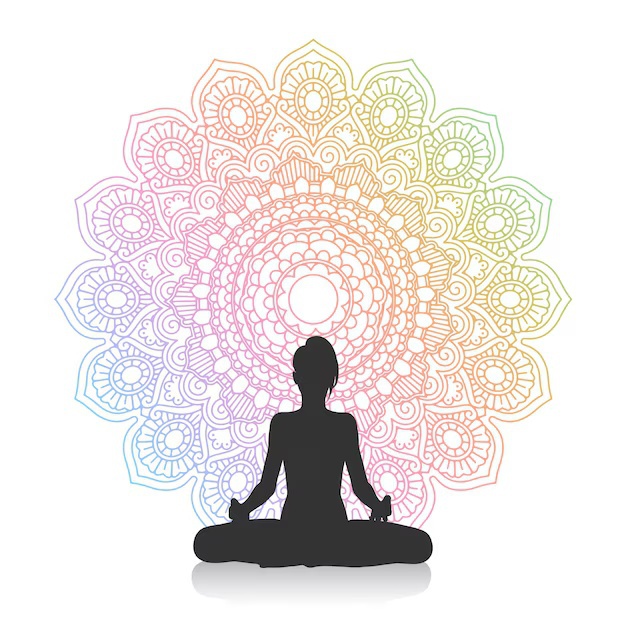
Upanishads
The Upanishads (800–400 BCE) are foundational texts that explore the philosophical dimensions of yoga. They teach that self-realization (atman) leads to unity with the ultimate reality (Brahman). Techniques like meditation (dhyana) and breath control (pranayama) are emphasized as tools for liberation (moksha).
Macedonian Texts
Alexander the Great’s invasion of India (327 BCE) brought Greek scholars into contact with Indian traditions, including it. While references are sparse, Macedonian accounts highlight Indian ascetics (gymnosophists) practicing meditation and austerities, showcasing it’s prominence in ancient India.
Mahabharata and Bhagavad Gita
The Mahabharata (400 BCE–400 CE) is an epic that integrates it into its spiritual teachings, especially in the Bhagavad Gita. The Gita presents it as a multifaceted discipline, combining action (Karma ), devotion (Bhakti ), and knowledge (Jnana ), making it accessible to people of all walks of life.
Philosophical Sutras
Philosophical sutras like the Yoga Sutras and Brahma Sutras provide systematic frameworks for yogic practices. They distill complex ideas into concise aphorisms, making them accessible for study and meditation. These texts bridge yoga with systems like Samkhya and Vedanta.
Classical Era (200 BCE–500 CE)
This period formalized yoga as a philosophical system. Patanjali’s Yoga Sutras synthesized earlier practices into Ashtanga Yoga, while the Bhagavad Gita popularized yoga as a spiritual guide. Philosophical debates enriched its theoretical foundations, linking it with metaphysics and ethics.
Yoga Sutras of Patanjali
Patanjali’s Yoga Sutras (circa 200 BCE) codify it into an eightfold path (Ashtanga Yoga), emphasizing ethical principles, physical postures, breath control, concentration, and meditation. It is a foundational text, combining Samkhya metaphysics with practical techniques for spiritual growth.
Yoga and Vedanta
Vedanta, a non-dualistic school of Indian philosophy, aligns with its goal of liberation (moksha). Both emphasize meditation and self-inquiry, though Vedanta focuses on realizing the unity of atman (self) and Brahman (ultimate reality).
Yoga Yajnavalkya
The Yoga Yajnavalkya is an early text detailing asanas, pranayama, and meditation. It offers practical guidance for integrating it into daily life and spiritual pursuits, emphasizing mindfulness and ethical living.
Abhidharma and Yogachara
Buddhist schools like Abhidharma and Yogachara developed advanced meditation techniques and psychological analyses. Yogachara’s concept of the mind-only reality influenced its introspective practices, emphasizing mental discipline and mindfulness.
Jainism
Jainism emphasizes asceticism and ethical living, contributing to yoga’s moral foundations (yamas and niyamas). Practices like meditation and fasting are central to Jain yoga, aimed at purifying karma and achieving liberation.
Middle Ages (500–1500 CE)
This period saw its evolution through the Bhakti movement, Tantra, and Hatha Yoga. Bhakti yoga popularized devotional practices, while Tantra introduced chakras and kundalini concepts. Hatha Yoga texts like the Hatha Yoga Pradipika emphasized physical postures and breath control.
Bhakti Movement
The Bhakti movement (6th–17th century CE) democratized yoga, focusing on devotion (bhakti) to personal deities. Saints like Kabir and Mirabai emphasized surrender and love as paths to liberation.
Tantra, Vajrayana, and Tibetan Buddhism
Tantric yoga explored esoteric practices, emphasizing energy channels (nadis) and chakras. Vajrayana and Tibetan Buddhism incorporated it into visualization and mantra practices, enriching its meditative techniques.
Zen Buddhism
Zen Buddhism integrated yoga’s meditative practices into its focus on mindfulness and enlightenment. Zazen (seated meditation) reflects yoga’s dhyana, emphasizing direct experience and simplicity.
Medieval Hatha Yoga
Hatha Yoga texts like the Hatha Yoga Pradipika (15th century) systematized physical postures (asanas) and breath control (pranayama). It emphasized physical purification to prepare for meditation and spiritual realization.
Sikhism
Sikhism (15th century CE) incorporates yoga principles like meditation and ethical living but critiques extreme asceticism. Guru Nanak advocated devotion and self-discipline as paths to union with God.
Most popular and widely practiced forms of yoga
1. Hatha
- Focus: Physical postures (asanas) and breathing techniques (pranayama).
- Best For: Beginners, as it introduces basic poses and slow-paced practice.
- Goal: Balancing body and mind, improving flexibility, and building a foundation for other types of yoga.
2. Vinyasa
- Focus: Flowing sequences of poses synchronized with breath.
- Best For: Those seeking a dynamic, movement-based practice.
- Goal: Building strength, stamina, and mindfulness through fluid movement.
3. Ashtanga
- Focus: A structured sequence of poses performed in the same order.
- Best For: People who enjoy discipline and consistency in their practice.
- Goal: Developing strength, flexibility, and inner focus.
4. Iyengar
- Focus: Precision and alignment in poses, often using props like blocks, straps, and bolsters.
- Best For: Individuals recovering from injuries or those who appreciate detailed instruction.
- Goal: Improving posture, flexibility, and balance.
5. Bikram (Hot Yoga)
- Focus: A series of 26 poses performed in a heated room (105°F or 40°C).
- Best For: Those who enjoy sweating and detoxification.
- Goal: Enhancing flexibility, circulation, and stamina.
6. Kundalini
- Focus: Awakening spiritual energy through chanting, meditation, and repetitive movements.
- Best For: Those interested in the spiritual and meditative aspects of yoga.
- Goal: Achieving spiritual awareness and balancing chakras.
7. Restorative
Focus: Deep relaxation using passive poses held for extended periods.
Best For: Stress relief and recovery from physical or mental strain.
Goal: Calming the nervous system and promoting healing.
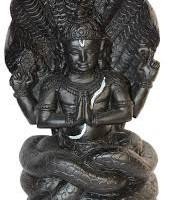
8. Yin
- Focus: Long-held, passive poses targeting deep connective tissues.
- Best For: Increasing flexibility and improving joint health.
- Goal: Releasing tension and improving circulation in the body’s fascia.
9. Power
- Focus: A more vigorous, fitness-oriented version of Vinyasa Yoga.
- Best For: Those who want to build strength and break a sweat.
- Goal: Enhancing strength, stamina, and flexibility.
10. Anusara
- Focus: Aligning movements with a heart-centered philosophy.
- Best For: Those seeking a blend of physical practice and spiritual growth.
- Goal: Cultivating inner joy and self-expression.
11. Prenatal
- Focus: Adapted poses for expectant mothers to improve flexibility, strength, and relaxation.
- Best For: Pregnant women looking to stay active and prepare for childbirth.
- Goal: Supporting physical and emotional well-being during pregnancy.
12. Jivamukti
- Focus: Combines vigorous Vinyasa flow with meditation, chanting, and philosophy.
- Best For: Those interested in combining physical practice with spiritual exploration.
- Goal: Deepening the connection between mind, body, and spirit.
Here’s a brief overview of the seven main chakras:
In yoga and many spiritual traditions, chakras are believed to be energy centers within the human body that correspond to different aspects of physical, emotional, and spiritual health. The word “chakra” comes from the Sanskrit word for “wheel” or “disk,” symbolizing spinning energy centers that regulate the flow of energy (prana) through the body. There are seven main chakras in the body, each associated with different qualities and elements.
Here’s a brief overview
- 1. Muladhara (Root Chakra)
Location: Base of the spine, at the perineum.
Element: Earth.
Color: Red.
Symbolizes: Safety, security, stability, grounding.
Associated with: Physical survival, financial security, basic needs, and the feeling of being grounded in the world.
2. Svadhisthana (Sacral Chakra)
Location: Lower abdomen, about two inches below the navel.
Element: Water.
Color: Orange.
Symbolizes: Emotions, creativity, sexuality, pleasure.
Associated with: Emotional well-being, pleasure, sensuality, and creativity. This chakra governs our relationships and emotional responses.
3. Manipura (Solar Plexus Chakra)
Location: Upper abdomen, around the diaphragm.
Element: Fire.
Color: Yellow.
Symbolizes: Personal power, self-esteem, confidence.
Associated with: Self-worth, inner strength, willpower, and the ability to manifest desires.
4. Anahata (Heart Chakra)
Location: Center of the chest, near the heart.
Element: Air.
Color: Green (or pink).
Symbolizes: Love, compassion, empathy, and healing.
Associated with: Relationships, unconditional love, forgiveness, and emotional balance. It bridges the lower, survival chakras with the higher, spiritual chakras.
5. Vishuddha (Throat Chakra)
Location: Throat, at the base of the neck.
Element: Ether (Space).
Color: Blue.
Symbolizes: Communication, self-expression, truth.
Associated with: The ability to express oneself, listen deeply, and communicate authentically. It governs speech, creativity, and the power of expression.
6. Ajna (Third Eye Chakra)
Location: Between the eyebrows, slightly above the bridge of the nose.
Element: Light.
Color: Indigo.
Symbolizes: Intuition, insight, perception.
Associated with: Wisdom, intuition, the ability to see beyond the physical world. This chakra governs mental clarity, insight, and spiritual awareness.
7. Sahasrara (Crown Chakra)
Location: Top of the head.
Element: Thought.
Color: Violet (or white).
Symbolizes: Spiritual connection, consciousness, enlightenment.
Associated with: Higher states of consciousness, connection to the divine, spiritual wisdom, and transcendence.
Chakra Balance and Health your body & Life
Each chakra governs a specific area of your life and physical body, and when a chakra is either overactive or underactive, it can lead to emotional, physical, or mental imbalances. Practices like yoga, meditation, breathing exercises (pranayama), and affirmations are commonly used to help align and balance the chakras, leading to greater well-being and spiritual growth.
The Flow of Energy
The energy in the body is thought to flow from the base (Root Chakra) upward to the Crown Chakra, which represents spiritual enlightenment. By balancing the chakras, you allow energy to flow freely, leading to a harmonious state of mind, body, and spirit.
